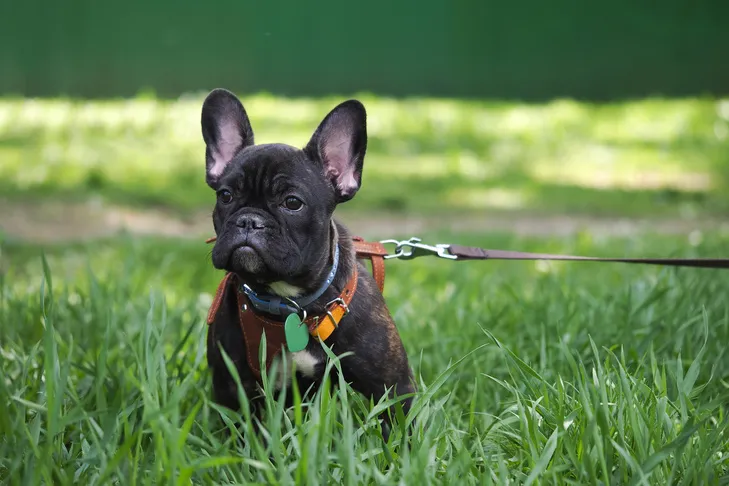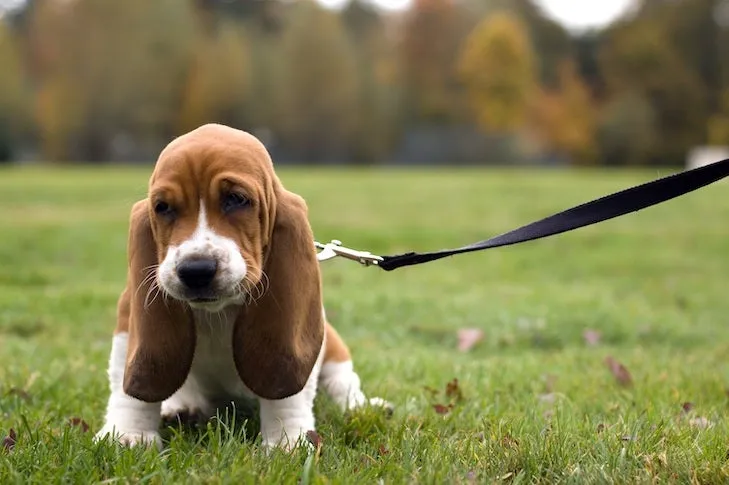Many new dog owners assume that puppies instinctively know how to walk politely on a leash. However, this essential skill is learned through consistent training, and mastering it will significantly enhance your daily walks together. Dog training expert and AKC Family Dog columnist Kathy Santo emphasizes that a solid foundation in leash training is crucial for a well-behaved companion. This guide will walk you through the steps to successfully teach your puppy to walk on a leash, ensuring enjoyable outings for both of you.
Getting your puppy accustomed to a collar and leash early on is the first step toward successful walks. Start by allowing them to wear a collar or harness and a leash for short intervals inside the house. Make these sessions positive by associating them with playtime and delicious treats. Your puppy should come to view “collar-and-leash time” as a fun and rewarding experience. how to teach your dog come here
Essential Steps for Leash Training Your Puppy
Building a strong foundation for future walks requires patience and a structured approach. Follow these fundamental steps to set your puppy up for success.
Introducing the Collar or Harness and Leash
Before you even think about walking, your puppy needs to be comfortable with their gear. Introduce the collar or harness and leash in a relaxed, controlled environment. Let them wear the equipment for brief periods, perhaps while they are eating or playing. The goal is to create positive associations, so always reward your puppy with praise and treats whenever they are wearing their collar or harness without fuss. This helps them understand that these items signify good things are about to happen.
Teaching a Positive Reinforcement Cue
A crucial element of effective training is establishing a sound cue that signals an impending reward. Whether you choose a clicker, a verbal “yes,” or a tongue cluck, the method remains consistent. In a quiet, distraction-free space with your puppy wearing their collar and leash, make your chosen sound. The instant your puppy looks at or turns towards you, offer a treat. With repetition, your puppy will quickly learn that this sound means “food is coming!” and will eagerly turn their attention to you, eventually moving closer for their reward.
 French bulldog puppy in a harness sitting in tall green grass on a leash for a walk.
French bulldog puppy in a harness sitting in tall green grass on a leash for a walk.
Encouraging Your Puppy to Come to You
Once your puppy reliably responds to the cue, it’s time to incorporate movement. While your puppy is approaching you after hearing the cue and still wearing their leash and collar, take a few steps backward. Reward them with a treat once they reach you. Gradually increase the distance, always rewarding them when they successfully follow you for a few paces. Remember that puppies have short attention spans, so keep training sessions brief and enjoyable, ending them before your puppy becomes tired or bored. This ensures they remain eager for the next session.
Practicing Inside Your Home
With the “come to you” command established, move to practicing short walks within a low-distraction room. The sensation of the leash and collar, combined with the act of walking a few steps, will be enough of a challenge initially. Continue to offer praise and treats generously as your puppy learns to follow your lead with the leash on. This controlled environment allows them to focus solely on the task without the overwhelming stimuli of the outside world, building their confidence incrementally.
Venturing Outdoors
Finally, your puppy is ready to test their new skills in the exciting outdoors. This step introduces numerous new challenges as every sound, smell, and sight will be intriguing and potentially distracting. Be patient, keep initial outdoor walks short, and stay vigilant. If you notice your puppy is about to lunge or become distracted, immediately use your cue sound and take a few steps away. Reward them generously with a treat for redirecting their attention and following you. This proactive approach helps your puppy associate external distractions with returning their focus to you.
Troubleshooting Common Leash-Training Issues
Even with proper initial training, your puppy may encounter challenges as they grow older, explore new environments, and face novel distractions. Addressing these issues early will lead to a more pleasant experience for both of you, fostering polite loose-leash walking.
Addressing Puppy Pulling
If your puppy begins to pull on the leash, the best strategy is to become a “tree.” Stand perfectly still and refuse to move forward until your dog relaxes the leash and returns to your side. Avoid yanking or jerking the leash, or dragging your dog. Consistent application of this method teaches your puppy that pulling leads to no forward progress. For persistent pullers, tools like front-hook harnesses or head halters can be effective alternatives, providing better control without causing discomfort.
Managing Puppy Lunging
When your dog attempts to lunge at objects during a walk—such as another dog, a car, or a skateboarder—proactive intervention is key. Anticipate the lunge and try to redirect their attention with a treat before they have the opportunity to react. Increase the distance between your dog and the perceived threat or exciting object. Remaining alert and prepared before the target gets too close can prevent the behavior from escalating. While more common in herding breeds, any dog can be startled or overly excited by new stimuli. how do you stop a dog from jumping
Handling Puppy Barking on Walks
Some puppies develop a habit of barking at other dogs or people during walks. Often, this behavior stems from a lack of adequate physical and mental stimulation. Ensure your puppy receives sufficient exercise and enrichment appropriate for their age and breed. If barking persists, employ a similar strategy as with lunging: create distance and offer treats before they start barking. Over time, your puppy will learn to associate the sight of other dogs with turning their attention towards you for a reward, rather than reacting defensively. how to stop dog barking when someone comes in
 Basset Hound puppy sitting in the grass on lead.
Basset Hound puppy sitting in the grass on lead.
Conclusion
Teaching your puppy to walk politely on a leash is a rewarding journey that strengthens your bond and makes walks enjoyable. By consistently applying these training techniques—from introducing the equipment and teaching a cue to practicing indoors and tackling outdoor distractions—you’ll build a solid foundation. Remember to be patient, use positive reinforcement, and address any challenges proactively. Gradually, you’ll find yourself needing fewer treats and less troubleshooting, confident in your puppy’s ability to walk calmly by your side. A well-trained puppy makes for a happier owner and countless pleasant adventures together.
